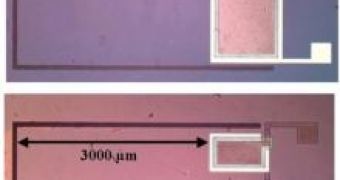The IMEC (Interuniversity Microelectronics Centre), a microelectronics research facility on the outskirts of Leuven, Belgium, created a new micro-device that can harvest energy from mechanical vibrations, by using micromachining technology.
They even built a model that could be used to optimize the device during design, producing powers up to 40?W, well in range of the power levels required by wireless sensor applications.
Transforming energy from the environment into electrical energy is a great solution when batteries are not available and could be used in portable small electronic devices. A typical example is considered the autonomous sensor networks that are spread over large areas or placed in locations that are difficult to access.
Certain polymers and glasses are known to change shape when exposed to light. This is called a piezoelectric effect and means that piezoelectric crystals, when subjected to an externally applied voltage, can change shape by a small amount, about 0.1% of the original dimension.
Conversely, zinc oxide nanowires produce current when flexed with an atomic-force microscope. When the piezoelectric wires are flexed by vibrations or, by ultrasonic waves, they bend, creating more charge on one side than on the other. When a nanowire bends far enough to touch the slanted surface of the top electrode, its charge is transferred, resulting in an average current proportional to the vibration.
"After the demonstration of a battery-less pulse-oxymeter, which is fully powered by a thermal scavenger, this is another encouraging result which brings us closer to seeing miniaturized scavengers in real-life applications. We believe that first of such devices will see market introduction in 5 years from now and will become mainstream by the end of next decade;" said Bert Gyselinckx, Program Director IMEC-NL in the Holst Centre.
The applications of these findings could mean miniature sensors that could be sprinkled in the environment or implanted in the body.

 14 DAY TRIAL //
14 DAY TRIAL //